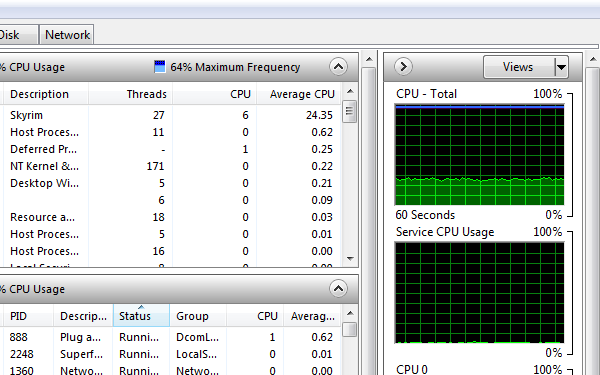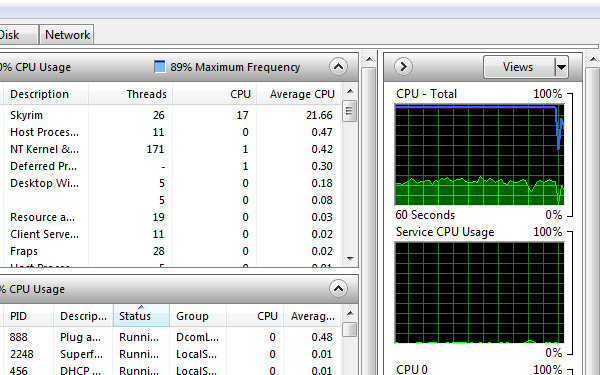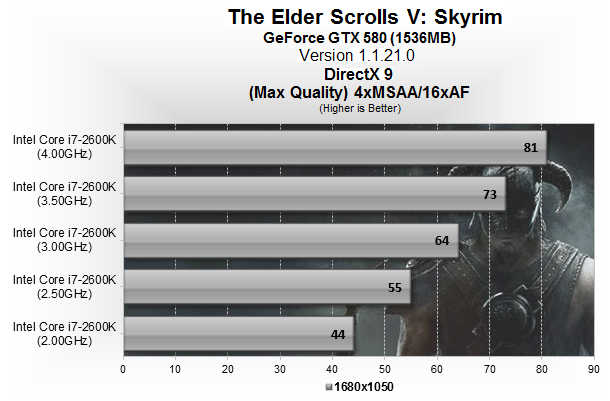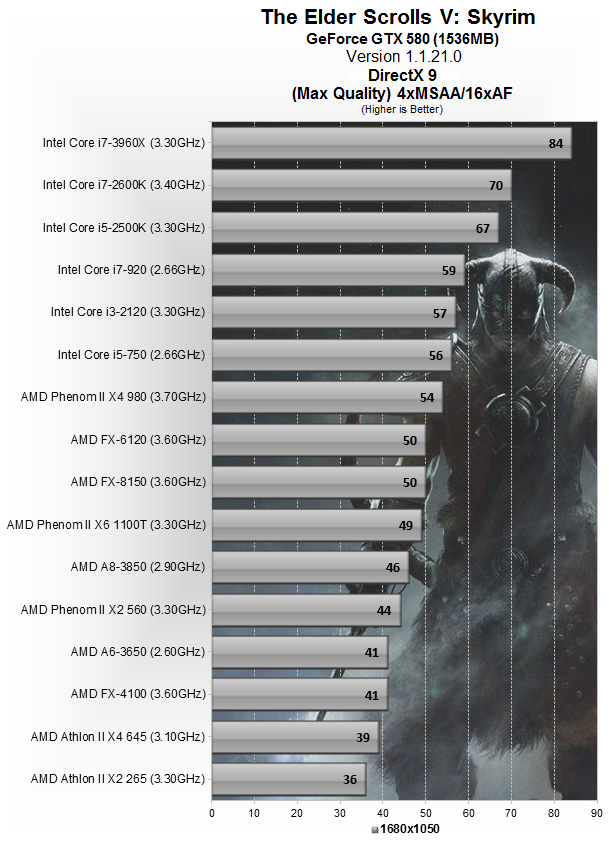CPU Scaling and Performance
Skyrim is said to be a heavily CPU-dependent game and, as you are about to discover, this is true. We hear the game offloads shadow rendering to the CPU and as a result, ultra quality shadows really hammer the processor.


The game appears to only be optimized for quad-core processors, as just four threads of the Core i7-2600K were active when playing. However, of those four threads, only one reached between 90-100% while the other three worked at around 30-50%. This means a decent dual-core processor should have no trouble playing Skyrim.

This is possibly the first game we've tested that truly stresses the i7-2600K. Reducing the chip to 2GHz lowered the GTX 580's average frame rate to just 44fps. Moving from 2GHz to 2.5GHz provided a 25% performance boost, and from 2.5GHz to 3GHz allowed for another 16% gain. We yielded 14% more performance when jumping to 3.5GHz and then another 11% moving up to 4GHz.
In other words, if your system is struggling to keep pace, you might want to decrease the shadow quality and/or overclock your processor.

We were surprised by two results on the graph above: the Core i7-3960X's 20% performance lead over the 2600K, and the AMD FX series' lousy showing. The FX-8150 and FX-6120 averaged just 50fps, making them just 1fps faster than the Phenom II X6 1100T, which was also sluggish. By comparison, the i5-750 averaged 56fps, the i3-2120 delivered 57fps and the old i7-920 managed a solid 59fps. Meanwhile, the more modern i5-2500K was sitting pretty with a respectable 67fps – 1fps below the i7-2600K.
